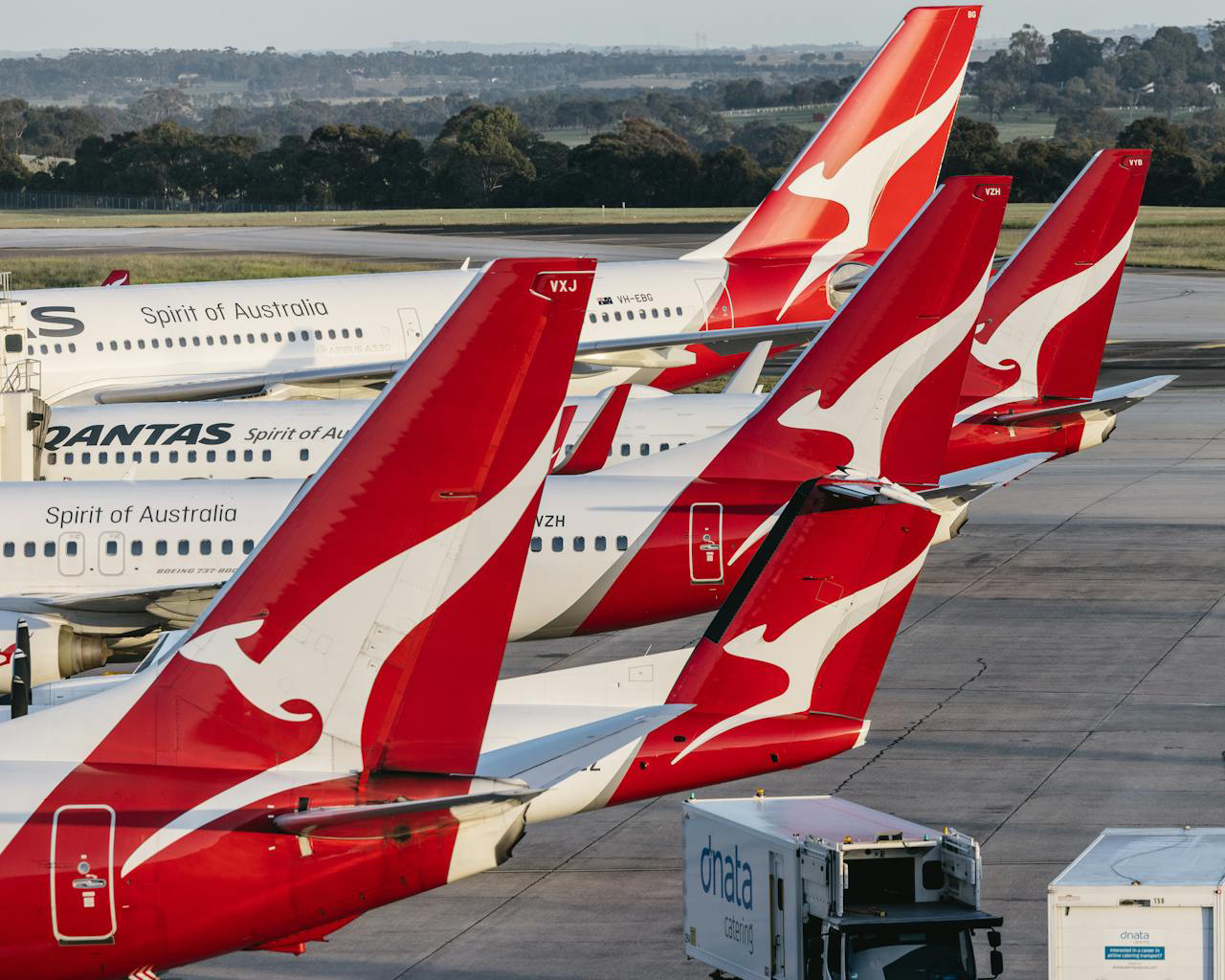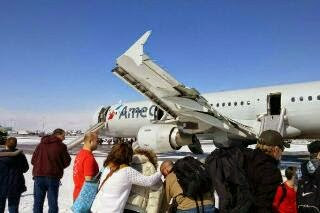Sunday, March 8, 2015
Are Boeing and Airbus Building Too Many Jets?
Saturday, March 7, 2015
In Conversation With John Borghetti, CEO, Virgin Australia; Edward Bastian, President, Delta Air Lines Strengthening Ties Between Australia and the United States
VIRGIN AUSTRALIA AND DELTA AIR LINES
In Conversation With John Borghetti, CEO, Virgin Australia; Edward Bastian, President, Delta Air Lines Strengthening Ties Between Australia and the United States
 12:00 pm - 2:00 pm 
Grand Ballroom Shangri-La Hotel Sydney 176 Cumberland Street The Rocks Event Partner: Carlson Wagonlit Travel Category: Signature Event Series inShare 
BOOK NOW Join Virgin Australia CEO John Borghetti and Delta Air Lines President Edward H. Bastian at the first event in AmCham's Signature Event Series. This event promises to be one of the biggest events of the year on the AmCham calendar. Don’t miss your chance to hear from two of the international aviation industry’s most esteemed executives in this exclusive fireside chat with renowned journalist, Ticky Fullerton. Delta Air Lines and Virgin Australia have been working together to support travel between Australia and North America since the launch of their trans-Pacific joint venture in 2011. Together, the two airlines have increased competition on the all-important trans-Pacific routes and facilitate travel to around 200 destinations across North America, enabling enhanced trade and tourism between the two regions. The United States is one of the top five source countries for visitors to Australia, and is also Australia's fourth largest merchandise export market, our largest import source for services, and the largest investor in Australia. This is a rare opportunity to hear from two renowned business leaders at the forefront of the global travel industry about the changing dynamics of aviation and trade between the U.S. and Australia and the opportunities that lie ahead. John Borghetti commenced as Chief Executive Officer and Managing Director of the Virgin Australia Group of Airlines in May 2010. Under his leadership, the Group has undergone a major strategic repositioning. Edward H. Bastian is President of Delta Air Lines and a member of the company's Board of Directors. Ed directs a team focused on strengthening Delta's solid foundation through strategic innovation, debt reduction, revenue growth and bolstering the airline's global network.
Limited Corporate Table Sponsorships and Premium Tables available.
Please contact Roxanne Filo, Event Manager, on 02 8031 9000 or via roxannefilo@amcham.com.au. Event Partner:
MH 370 Can be Found!
Malaysian Ministry of Transport announced on March 8, 2014 MH370 lost flight number of passenger aircraft can be found in the Indian Ocean.
MH370 flight number after a period of Malaysia Airlines passenger plane disappeared from radar in Vietnamese airspace. The statement made by the Malaysian Ministry of Transport, despite not being able to report a year from the Boeing 777 airliner were expressed can be found in the Indian Ocean. In a statement Liow Tiong Lai relevant Malaysian Transport Minister, stressing that they hide any details about the flight authorities, passengers and 12 crew during the flight 227 passenger aircraft, he said, can still be found in the search operation.
On the other hand, in a statement issued earlier this week, Australia, Indonesia and Malaysia reportedly will I came to the search operation using a new method.
March 8, 2014 the date of the Malaysian capital of Kuala Lumpur from a passenger plane taking off to go to Beijing lost in Vietnamese airspace. Despite launched search operation after the incident could not find any trace of the plane
Qatar Airways to Increased Options
Qatar Airways has announced that Oscar-winning and Oscar-nominated from a list consisting of exciting films increases during flight entertainment options offered by including among alternatives.
One Year Passed after Malaysian Airlines Lost
Malaysia Airlines' passenger aircraft with 239 passengers a year has passed over the loss. But still could not trace the aircraft. Even Australian Prime Minister Tony Abbott said at last, "I do not promise that it will continue with the same intensity of the search operation." He said. Between the cockpit and control tower made the remarks at the last meeting, '' Well, good night, '' was described as. Was first focused on the signals from the black box of the aircraft is believed to be breached in a large area in Kazakhstan began exploration in the Northern Hemisphere than in the Southern Hemisphere Australia. The source of the signals were in the ocean came full depth of 4572 meters depth .. It falls from the level in 2012, where France passenger plane belonging to 600 meters deep. This difference was greatest indicator of how the work is challenging.
Friday, March 6, 2015
New Features of Bombardier Vision
On March 4, over 60 representatives of aviation-related businesses in Canada and aircraft operators in Québec, attended the CBAA-Québec Chapter. The CBAA members met at Bombardier Aircraft Training Center to network and discuss important safety, pilot training and regulatory aviation issues. Bombardier is a long-time member of the CBAA and active on the Quebec chapter since 2008.
Jeffrey Derman, ACASS and Marc Fréchette, Hutchinson Aerospace won a session aboard our Global 5000 and Global 6000 aircraft full flight simulator featuring the Bombardier Vision flight deck. Congratulations!
Smoke Panic In American Airlines US 445 Flight Number
American Airlines flight from Denver to Charlotte aircraft that, after landing in the airport there was a panic in the cabin smoke.
US445 flight number to the aircraft took off to move to Denver from Charlotte North Carolina eylet city in the United States.
Charlotte-Douglas Airport departing from the Airbus A321 type aircraft, the capital of the province made landing in Denver, Colorado. Meanwhile, the aircraft enters the taxiway after smoke caused panic occurred in the cabin.
Passengers have been evacuated by slides were detonated learned that there are no injuries.
Delta Airlines Exit Runway
Delta Airlines flight number DL1086 aircraft took off from Atlanta-Hartsfield-Jackson Airport to make his New York time.
Braving heavy snow that just to LaGuardia Airport in New York, landing Douglas MD-88 type aircraft performs Delta emerged from the runway.
According to reports no injuries and learned that initiated the evacuation of passengers.
On the other hand, is broken in the information from the aircraft's wings and it was a fuel leak.
CEO of GE Reshaping the Future
(Bloomberg) -- About 15 years after General Electric Co. held a high-profile bake-off to determine the successor to then-Chief Executive Officer Jack Welch, speculation has begun over who could be next in line for the top post.
Possible candidates to succeed CEO Jeffrey Immelt come from across GE and include Steve Bolze, head of the power and water unit; Lorenzo Simonelli, the oil and gas CEO; and Vice Chairman John Rice, analysts said in interviews. Shannon O'Callaghan of UBS AG and William Blair & Co.'s Nicholas Heymann were among analysts who discussed potential successors.
A Barclays Plc note on Monday sparked the latest round of speculation and suggested Chief Financial Officer Jeff Bornstein was a front-runner. How GE proceeds depends largely on when the 59-year-old Immelt opts to exit, especially if the next CEO intends to match Welch's two-decade tenure. A sudden vacancy now may favor a seasoned executive such as Rice, 58, while Simonelli, 41, may be better situated if Immelt departs in a few years.
"They clearly have deep bench strength, much deeper than most corporations," said Gail Meneley, a principal at Chicago-based consultant Shields Meneley Partners, whose clients include McDonald's Corp. and Johnson & Johnson. "They will of course place heavy weight on the opinion of the CEO who has been in the seat and knows what it takes."
Industrial Focus
Immelt, CEO and chairman of the 305,000-employee industrial giant since 2001, is reshaping GE around its industrial divisions as he looks to boost margins and energize a languishing stock. Since he took over for Welch four days before the 9/11 terror attacks, the shares have fallen 35 percent while the Standard & Poor's 500 Industrials index has almost doubled. The 2008-09 financial crisis slammed the GE Capital unit, imperiling the Fairfield, Connecticut-based parent company.
Welch started formal succession-planning discussions more than seven years before he stepped down, according to a 2001 Fortune article. In a June 1994 board meeting, Welch brought a handwritten list of 24 candidates separated into three categories: "obvious field," "contenders" and "broader consensus field." The three executives who made it to the final round -- Immelt, Robert Nardelli and James McNerney -- all started in the third category.
In subsequent years, Welch arranged social events for directors to get to know the executives, while not publicly revealing the challengers until after the selection was made. Promotion decisions were made to give the leading candidates broader experience. Immelt was rumored to be a favorite a year before he was announced as the winner.
Retirement Plans?
After more than a decade as CEO, Immelt could step down in the next year, Barclays's Scott Davis said Monday in a note. "Most investors are ready for a change at the top now," Davis said.
Seth Martin, a GE spokesman, declined to comment about the Barclays report, and Immelt hasn't said when he plans to retire. In an October interview, he said, "There will be a natural time to think about a transition, but for right now you're stuck with me."
The timing and field of potential successors could be dictated in part by whether Immelt is successful in his effort to focus GE around high-margin industrial units.
"It very much depends on the success of the current plan," said UBS's O'Callaghan. "If it fails, who knows what's going to happen?"
While GE has a history of grooming candidates internally, a sharp slump in the business could force it to look outside, said Peter Sorrentino, a portfolio manager for Cincinnati-based Huntington Asset Advisors Inc., which owns GE shares.
'Same Kool-Aid'
"I don't know that it's a GE insider because this team has been together long enough and are sort of drinking the same Kool-Aid," Sorrentino said. "If you don't change the scenery you're going to get the same thing."
Immelt had some early missteps, including overpaying for U.K.-based biotechnology company Amersham Plc in a $10.3 billion deal in 2004, said Jack De Gan, chief investment officer of Harbor Advisory Corp. The CEO has earned back some investor goodwill with more recent moves, including the effort to shrink the volatile finance arm, said De Gan, whose Portsmouth, New Hampshire-based firm owns about 100,000 GE shares among its $130 million in assets.
"The market over the last year or so is starting to come to believe that the transformation of GE's portfolio and the rapid decline in the financial business is going to do the trick," De Gan said. "Late '16, early '17 is a time when the market should really be appreciating the work he's done."
To contact the reporters on this story: Richard Clough in New York at rclough9@bloomberg.net; Thomas Black in Dallas at tblack@bloomberg.net
To contact the editors responsible for this story: Edward Dufner at edufner@bloomberg.net Larry Reibstein
Unveiling the Truth Behind Qantas' 'Ghost Flights' Scandal
In a shocking turn of events, Australian airline giant Qantas has been fined a whopping $66 million for its involvement in the c...

-
Singapore is home to a number of top-rated airlines, including the country's flag carrier, Singapore Airlines. However, in r...
-
) Uçakların havada hareket ederken ihtiyacı olan sağa sola olan dönüşleri,yukarı-aşağı hareketini,yunuslama hareketi için gövde ve kanat an...












